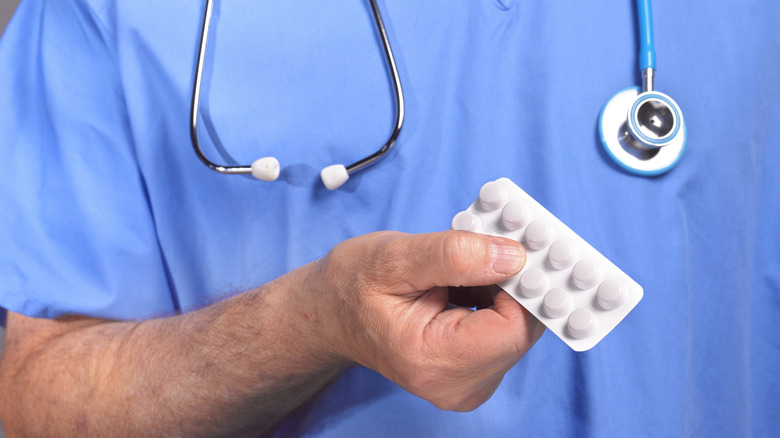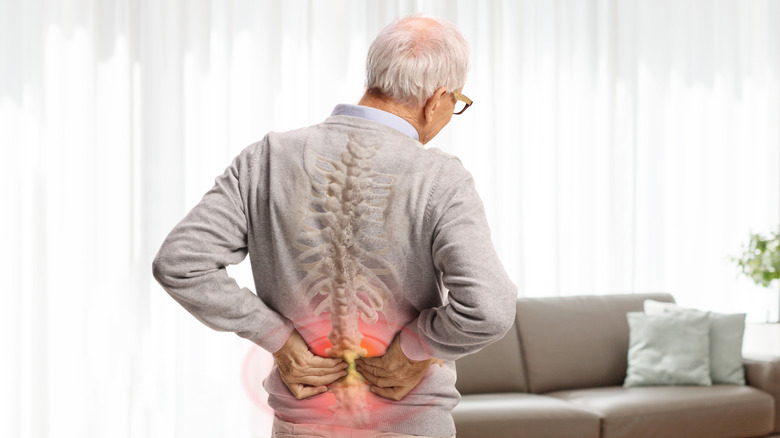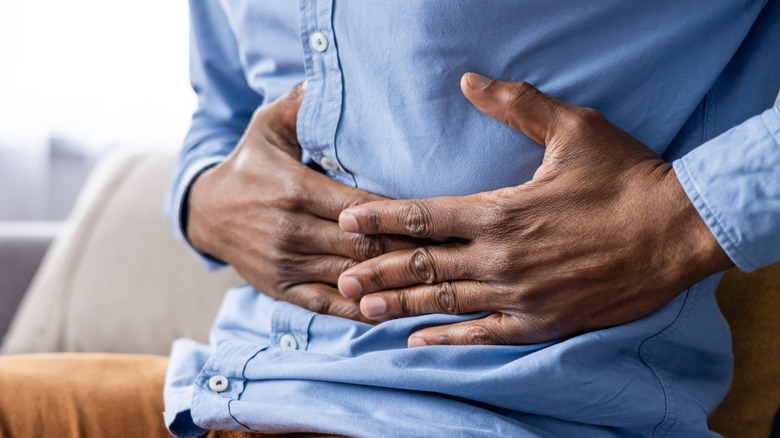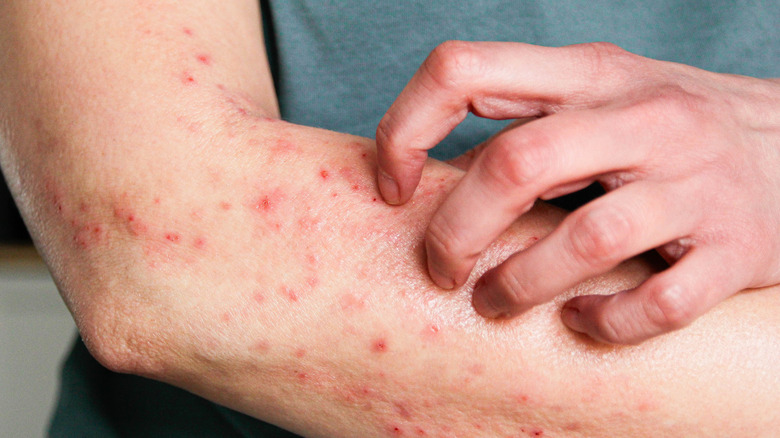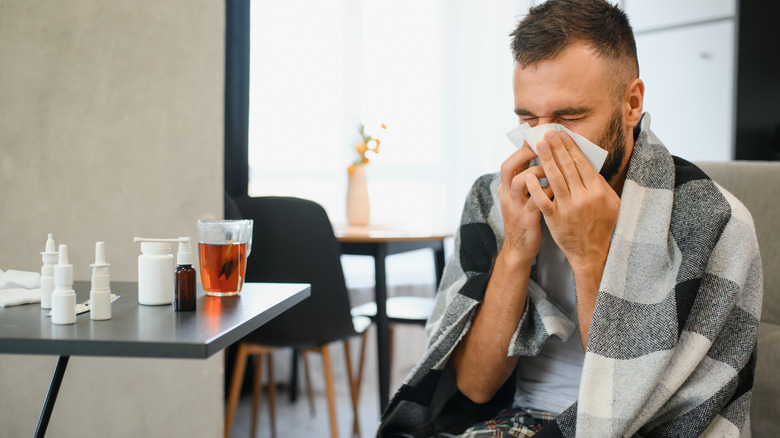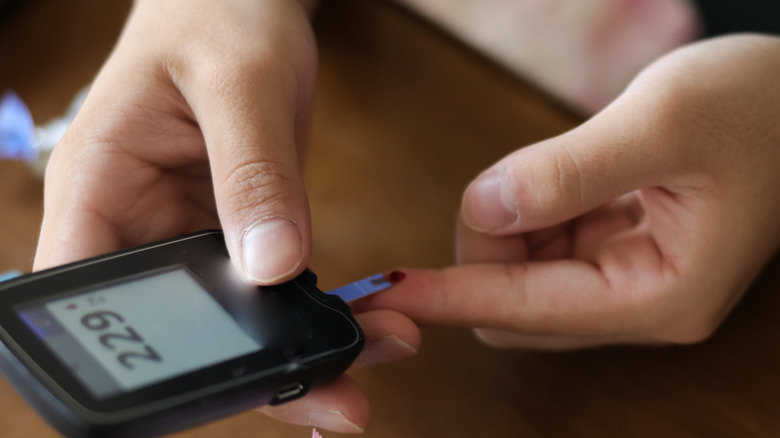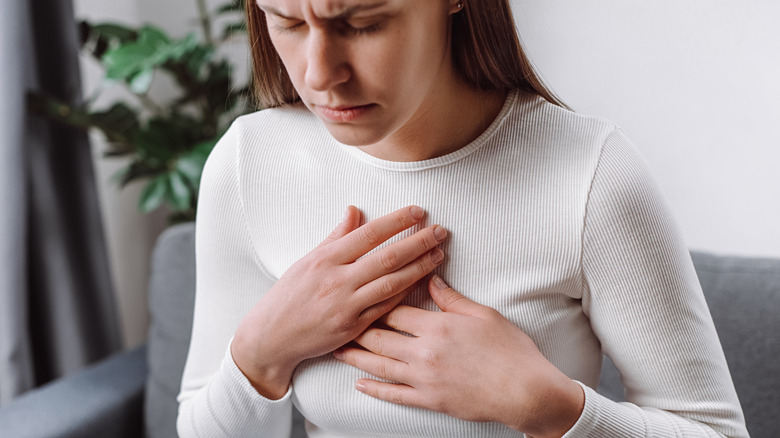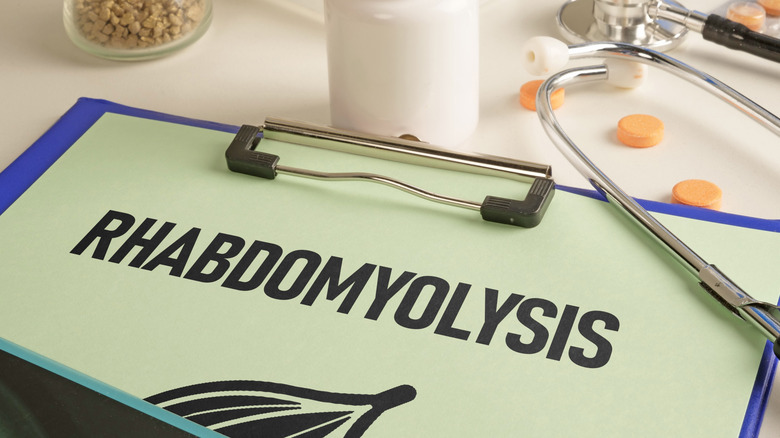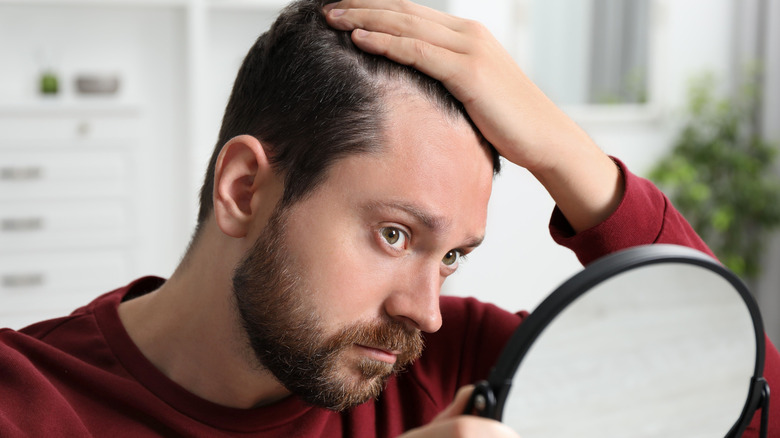The 10 Most Unexpected Cholesterol Medication Side Effects
Having high blood cholesterol levels (hypercholesterolemia) is a risk factor for heart diseases like heart attacks and strokes because it can lead to plaque buildup, which can restrict blood flow. For that reason, cholesterol-lowering medications could be prescribed to people who need to get their cholesterol levels under control or those with a higher risk of developing heart conditions due to factors such as genetics, lifestyle, or underlying medical conditions like diabetes and hypertension, especially when incorporating healthy habits into their lifestyle (like following a healthy diet and exercising) is insufficient.
Several cholesterol-lowering drugs are available, each working through different mechanisms. For example, statins (atorvastatin, simvastatin), the most commonly prescribed, work by inhibiting an enzyme involved in the liver's cholesterol production. In contrast, ezetimibe hinders cholesterol absorption in the intestine, while bile acid sequestrants (cholestyramine, colestipol) bind to bile acids, prompting the liver to use blood cholesterol to produce new bile. PCSK9 inhibitors help lower LDL (bad) cholesterol levels, whereas adenosine triphosphate-citrate lyase (ACLY) inhibitors (bempedoic acid) block cholesterol synthesis. Fibrates (gemfibrozil, fenofibrate) help lower triglycerides and modestly raise HDL (good) cholesterol, while niacin (nicotinic acid) lowers both triglycerides and LDL cholesterol. Finally, omega-3 fatty acids are a dietary supplement that helps reduce blood triglyceride levels. Yet, like most prescription medicines, cholesterol-lowering drugs have their share of side effects ranging from mild to severe. This article explores the ten most unexpected side effects of cholesterol medication.
Muscle pain
Cholesterol medications, particularly statins, are associated with an increased risk of muscle pain. In fact, according to a study in Physical Therapy, up to 18% of people on statins report some form of skeletal muscle side effect, including muscle cramping and soreness, fatigue, and weakness. What's more, these pains appear to be dose-dependent, meaning that the higher your statin dose, the likelier you are to experience them. The side effect happens because statins work by inhibiting the enzyme HMG-CoA reductase, which is essential for cholesterol production in the liver. However, this enzyme is also involved in the production of additional compounds, such as dolichols, coenzyme Q10 (CoQ10), and prenylated proteins, all of which play a role in keeping your muscles healthy. Thus, although cholesterol is statin's intended target, its effects unintentionally reduce said compounds, causing unwanted muscle pains.
For example, per an article published in the Journal of General Internal Medicine, people who manage their cholesterol with statins are about 50% more likely to experience muscle pain compared to those who don't take these medications, and the risk seems to be even higher for pain in the lower back and legs. Luckily, there are a couple of ways to manage statin-induced muscle pain. For starters, your doctor might switch you from one statin to another, which usually does the trick. Alternatively, they might adjust your dosage, prescribe a CoQ10 supplement, or change your cholesterol medication to another type you might tolerate more easily.
Gastrointestinal discomfort
There is ongoing debate about whether cholesterol-lowering medications help or worsen gastrointestinal (GI) symptoms such as diarrhea and constipation. On the one hand, according to a study in BMJ Case Reports, another unintended side effect of statins is an increase in nitric oxide levels, which the authors believe may impair motility or movement in the colon, leading to constipation. The study presents the case of a 70-year-old man who, just after six months of starting a statin treatment, reported abdominal pain and a feeling of constipation described as not being able to completely finish going to the bathroom, both of which improved when pausing his statin treatment, and stopped altogether when he was switched to ezetimibe, a cholesterol absorption inhibitor. Similarly, another study in BMC Gastroenterology lists atorvastatin as a risk factor for constipation, noting that up to 3% of statin users might develop this side effect due to its impact on intestinal motility or gut microbiota alteration.
On the other hand, a study in Frontiers in Pharmacology argues that regular statin users tend to have a lower risk of diarrhea and colitis. Statins might actually improve the gut's microbiota profile and provide immunomodulatory and anti-inflammatory properties, reducing infection and inflammation in the gut, thus lowering GI discomfort. Lastly, another study published in The Journal of Clinical Pharmacology found that, despite the warnings on their packaging, there was no statistically significant difference in abdominal pain, colitis, or constipation between people taking statins and those who don't.
Joint pain
Joint pain (arthralgia) is not typically considered a common side effect of cholesterol-lowering medications. Yet, some people report experiencing it while taking these drugs. For example, an article published in the British Journal of Clinical Pharmacology presents the case of a 42-year-old man without any previous history of arthritis who, after increasing his statin dose, reported feeling pain in one of his knees, which went away after discontinuing the medication. The man did not report further pain when switching to a lower dose of a different statin medication. However, both the article and GoodRx explain that, due to a lack of clinical evidence, statin-induced joint pain might be underreported or attributed to underlying osteoarthritis, which is a common condition in the elderly characterized by joint stiffness and swelling, making it difficult to differentiate whether the pain results from one or the other.
Moreover, it is also possible that the reported joint pain might actually be muscle pain, which is a well-documented side effect of statins. This might happen because muscle pain and joint pain can feel similar or overlap, causing people to perceive statin-induced muscle discomfort as joint pain. In any case, anyone experiencing persistent joint discomfort while taking these medications should consult their healthcare provider to assess potential causes and explore alternative treatments or dosages if necessary.
Skin rashes
While not a widely recognized side effect, cholesterol-lowering drugs, particularly statins, have been linked to various skin-related reactions, including chronic urticaria (persistent hives), a condition characterized by itchy patches of skin that might evolve into uncomfortable welts. In fact, per an article in Asia Pacific Allergy, up to 7% of statin users might develop a drug-induced skin rash or allergic reaction.
A study in the Journal of the American Academy of Dermatology links mild dermatologic adverse effects such as photosensitivity, contact dermatitis, dry skin, acne, urticaria, eczema, itching, and rashes, as well as more serious but rare conditions including severe blistering disorders such as Stevens-Johnson syndrome, drug-induced lupus, and lichenoid drug eruptions to six different types of statins. Though the exact mechanisms for the plethora of skin side effects are still unclear, the researchers believe that statin-induced eczema, which is more common in people over 60 and might have a dose-dependent effect, might occur due to statins' impact on the skin's lipid levels. This is because, by lowering cholesterol levels, statins might cause the skin to become drier, exacerbating skin irritation.
In some cases, people who develop dermatologic side effects after starting statins see their symptoms improve upon statin discontinuation, further suggesting a potential connection. Per a study in The European Journal of Case Reports in Internal Medicine, this was the case of a 65-year-old woman who developed a rare skin rash called lichenoid drug eruption upon starting a statin regime for her high cholesterol levels, which disappeared when switched to a different type of cholesterol medication.
Flu-like symptoms
Have you ever had an incessant sneezing, cough, or runny or stuffy nose come seemingly out of nowhere? If so, you might have dealt with nonallergic rhinitis, a flu-like response from your body that is not caused by a virus or allergies. While the cause of nonallergic rhinitis is still a mystery, some medicines are known to act as triggers, and research suggests that statins are among the culprits. According to a report published in Medical Science Monitor, this very rare statin side effect might lead to symptoms ranging from severe tiredness and weakness to muscle and joint pain and mild fever, all of which might appear even while taking the lowest available dose for the medication and which seemingly disappear when discontinuing its use.
Again, the exact reason these cholesterol-lowering drugs may cause said reactions is not entirely clear. Yet, as the National Health Service (NHS) in England explained via Express, statins have been linked to mild inflammation, which might also affect the inside of the nose, leading to a fluid buildup that you might recognize as nasal congestion. Other cholesterol-lowering drugs, such as PCSK9 inhibitors, might also cause similar reactions, including symptoms like sore throat, cough, and a runny nose. These symptoms are temporary and mild for most people, resolving as the body adjusts to the medication. However, you could also use nasal sprays or a humidifier to alleviate them.
Hyperglycemia
Despite being the number one cholesterol-lowering drug choice, statins are also known to impair insulin function, potentially leading to high blood sugar levels (hyperglycemia) or even a slightly higher risk of developing type 2 diabetes. According to a study in The Journal of Investigative Medicine, two possible mechanisms leading to this side effect include statin's impact on the pancreas and on muscle tissue. On the one hand, it is believed that statins increase calcium levels in the cells responsible for producing insulin in the pancreas, causing a decrease in insulin production and leading to higher blood sugar levels. On the other hand, statins might also reduce the activity of GLUT4, a protein that helps move sugar from the blood into the muscles. If GLUT4 activity decreases, less glucose is absorbed by the body's cells, causing blood sugar levels to stay higher than normal. Thus, both of these effects could contribute to the increased risk of hyperglycemia seen in some people taking statins.
What's more, the effect can be seen in both people with and without impaired blood sugar control when on a long-term statin regime. Yet, it appears to be more significant in those with a previous diabetes diagnosis. However, per a review in the Cleveland Clinic Journal of Medicine, the risk of statin-induced type 2 diabetes is directly proportional to statins' dosage, as well as the presence of additional risk factors, such as having pre-diabetes, abdominal obesity, genetic factors, high blood pressure, and poor lifestyle choices. Yet, despite these concerns, most experts agree that the cardiovascular benefits of statins outweigh the potential risks of hyperglycemia.
Gastroesophageal reflux disease
It is not uncommon for certain medications to cause GI-related side effects such as gastroesophageal reflux disease (GERD), a condition in which the stomach's acid (the one responsible for helping break down and digest food) repeatedly flows back into the esophagus, causing it to become irritated and leading to the uncomfortable and painful feeling you might know as heartburn, and, as it turns out, statins are among such medications. However, research on the relationship between statins and heartburn is mixed, with some reports including this condition as a statin-related side effect, while others indicate that statins may actually have protective effects.
For example, a paper published in the American College of Cardiology lists heartburn as a potential statin side effect. Similarly, a study published in Clinical Drug Investigation determined that statin use increased the chances of developing either GERD or esophagitis, a GERD complication in which the esophagus becomes inflamed. Nevertheless, a meta-analysis published in the Journal of Postgraduate Medicine determined that statin use might actually reduce the risk of GERD thanks to its anti-inflammatory properties. Similarly, a study published in the Canadian Journal of Gastroenterology and Hepatology found that statin use protected against esophagitis in people with GERD. Ultimately, if heartburn becomes bothersome while taking statins, lifestyle changes such as avoiding trigger foods, eating smaller meals, and not lying down immediately after eating may help keep it at bay.
Rhabdomyolysis
Although cholesterol-lowering drugs are generally well-tolerated, some of them, particularly statins, can, in rare cases, cause a severe condition called rhabdomyolysis. According to a review published in Drug, Healthcare, and Patient Safety, this life-threatening condition occurs when muscle fibers break down rapidly, releasing their components, including a protein called myoglobin, into the bloodstream, which is what causes one of its telltale signs: dark or red-colored urine. Other symptoms include muscle pain, swelling, and weakness. According to a study in Oxford Medical Case Reports, rhabdomyolysis might lead to complications such as acute kidney failure, dangerous electrolyte imbalances, compartment syndrome, and irregular heartbeat.
Luckily, the risk of rhabdomyolysis from statins is extremely low, estimated at about one case per 100,000 patients per year. Still, when it does occur, it requires immediate medical attention. Per the review, high-dose statin use is a potential risk factor for statin-induced rhabdomyolysis. However, in about 50% of the cases, this side effect happens due to drug-drug interactions, especially with fibrates, antibiotics, and other medications for heart conditions. Older adults and those with underlying kidney disorders may also be more vulnerable, as well as people who engage in strenuous exercise. If someone on statins experiences any of the previously mentioned symptoms, they should stop the medication immediately and contact their doctor as soon as possible to prevent any life-threatening complications.
Hair loss
Some case reports suggest that statin use may be linked to alopecia (hair loss), but there is no official recognition of this as a common or direct side effect. In fact, according to an NHS report, all U.K.-approved statins have been linked to hair loss cases, leading experts to wonder whether what has been widely believed to be age-related hair loss might actually be a drug-induced side effect.
A few patients taking statins have reported experiencing thinning hair or increased shedding, leading researchers to explore whether there is a connection. For example, in a case report in Internal Medicine, a 53-year-old man on rosuvastatin noticed significant hair loss just 10 days after starting his statin regimen, which led him to stop taking the medication, resulting in hair regrowth two weeks later. Similarly, an article in The American Journal of Medicine shared the experience of a 38-year-old woman on atorvastatin who, six weeks after starting her cholesterol-lowering medication, complained of progressive hair loss, which also reversed several weeks after discontinuing its use.
Still, large-scale studies and clinical trials have not established a clear cause-and-effect relationship between statins and hair loss, and reports of alopecia remain anecdotal. If you notice significant hair loss after starting a statin, try asking your doctor about the benefits of stopping its use or switching to another type of cholesterol medication, such as the cholesterol absorption inhibitor ezetimibe, seeing that both solutions helped in the case of the 53-year-old man on rosuvastatin. Yet, keep in mind that the cardiovascular benefits of statins generally outweigh any risks related to hair health.
Memory loss
The relationship between statin use and memory function remains controversial, with conflicting reports on whether these cholesterol-lowering drugs impair or improve cognition. According to a study published in JAMA Internal Medicine, anecdotal evidence supports the memory loss claim, whereas research backs up the improved effect. Moreover, it hypothesizes the double mechanisms that might explain both sides of the argument. On the one hand, cholesterol buildup is believed to be linked to the accumulation of beta-amyloid plaques in the brain, which is considered to be the cause of Alzheimer's disease and dementia. Thus, the study explains that by reducing cholesterol levels and, therefore, its buildup, statins might delay memory loss.
On the other hand, it shares that since some statins might cross the blood-brain barrier, they might interfere with neuron function by disrupting synaptic activity (the brain's cells communication system), potentially contributing to memory issues. Similarly, another study published in The Journal of Gerontology adds that since cholesterol is an essential component of brain function, significantly reducing its levels might impair good neuronal functioning. Moreover, given statin's reports on memory lapses, the U.S. Food and Drug Administration (FDA) has acknowledged the side effects and approved label changes to list memory loss and confusion as a non-serious and reversible side effect after discontinuing its use.
How to manage side effects
While cholesterol-lowering drugs are highly effective in reducing heart disease risk, they can sometimes cause unpleasant side effects, especially if you're taking statins. Fortunately, there are a couple of different strategies you could try to manage these effects and ensure a balance between heart health and overall well-being. For starters, you could ask your healthcare provider to adjust your medication regimen, which could entail either temporarily stopping your medication, lowering the dosage, or switching to a non-statin cholesterol-lowering drug. Additionally, embracing a few lifestyle and dietary changes can also help manage cholesterol while minimizing the need for high-dose medications, helping you reduce symptoms while still maintaining cholesterol control. Some examples include exercising regularly and avoiding modifiable risk factors for heart disease, such as smoking, vaping, and overindulging with alcoholic drinks.
Plus, you can't forget about the power of following a heart-healthy diet. When it comes to eating your high cholesterol away, cutting excess salts and trans fats is key, whereas adding more fiber and healthy fats, like omega-3 fatty acids, can go a long way. In fact, some naturally cholesterol-lowering foods include oats, garlic, oily fish like salmon, mackerel, and anchovies, and red yeast rice extract (RYRE). Ultimately, managing cholesterol medication side effects requires a personalized approach and working closely with a healthcare provider who should be made aware of any additional medicines or supplements you're on to ensure they avoid prescribing anything that might lead to potentially harmful drug interactions.
